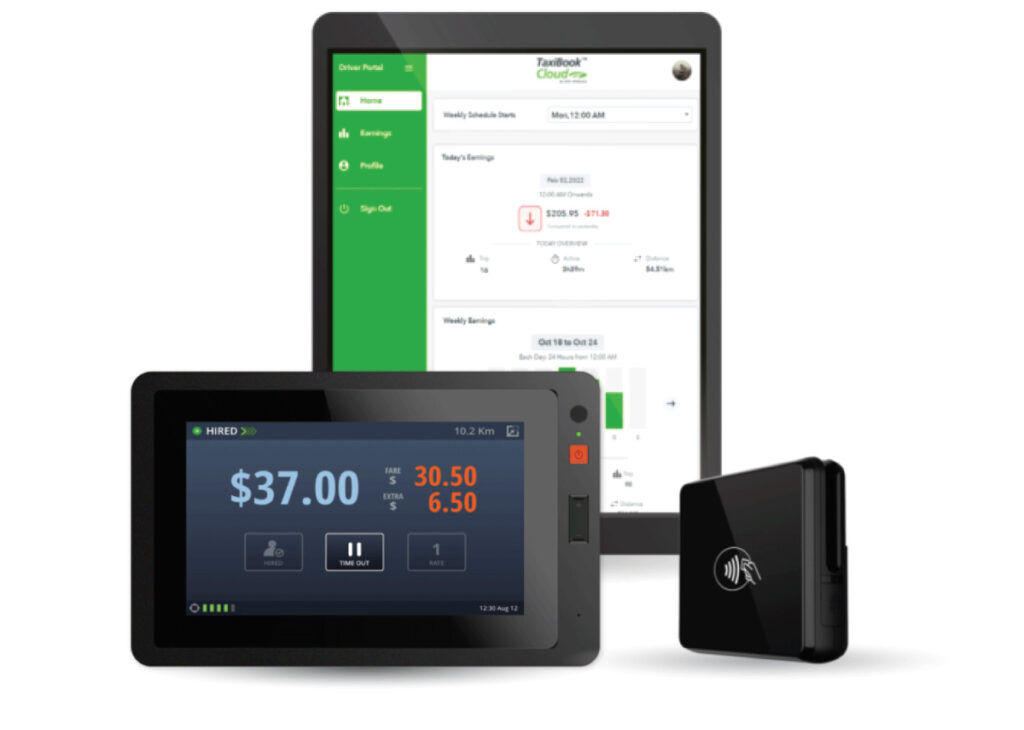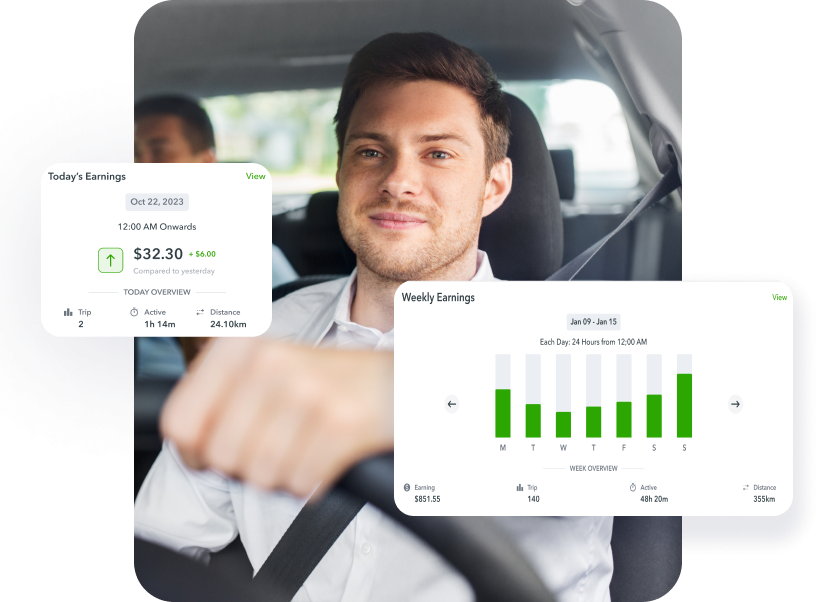April 3, 2024
The ascent of Uber and Lyft has fundamentally reshaped transportation, introducing fierce competition for business with traditional taxis. These top taxi apps offer unbeatable convenience and have access to competitive pricing through their user-friendly platforms. With extensive networks of drivers, they ensure swift service, leaving traditional taxis struggling to keep pace. Despite regulatory hurdles, these companies appeal particularly to younger demographics and continually innovate, signaling a significant transformation in how people commute, exemplified by recent milestones like Uber’s $271.8 million settlement.
To stand firm against top ride-hailing services like Lyft and Uber, traditional taxi companies can adopt several strategic approaches. Embracing technology is paramount, including the development of intuitive mobile apps for booking and payment, alongside GPS-based dispatch systems to plan and make stops and optimize routes. Flexibility in pricing, coupled with superior service delivered by well-trained drivers and well-maintained vehicles, are important. Additionally, leveraging local knowledge and collaborating with ride-hailing services, offering specialized services, engaging with communities, advocating for fair regulations, and investing in marketing and branding efforts can enhance competitiveness. Flexibility in fleet management and adapting to evolving consumer preferences are also key strategies in this dynamic and complex market.

Route optimization and routing software significantly enhance taxi drivers’ efficiency and effectiveness, benefiting the service chain with full control for taxi operators’, dispatchers and route planners. These tools offer optimal routes considering factors like distance, traffic conditions, and vehicle capacities, focusing appropriate time windows and on the shortest path resulting in time and fuel cost savings.
Drivers can spend less time driving and more time completing trips. Real-time GPS tracking enables dynamic route adjustments, ensuring prompt arrivals despite unexpected obstacles. Dispatcher capabilities streamline job assignments, reducing idle time and enhancing service. Maintenance reminders and fuel management features optimize vehicle upkeep and fuel consumption. Additionally, compliance features help drivers adhere to regulations. Overall, these software solutions, such as TaxiBook IQ, empower taxi drivers to operate more effectively, improve customer service, and maximize resource utilization.
Regulatory hurdles have significantly influenced the operations of top ride-hailing services like Lyft and Uber. These challenges range from city-specific licensing battles and compliance issues to constraints on driver numbers set based on passenger demand. Concerns over environmental impacts, strain on infrastructure, and legal conflicts with taxi and livery companies further shape the landscape. Balancing innovation with responsible regulation remains an ongoing challenge for these options.
Despite the global disruption caused by Lyft and Uber, traditional taxis still maintain dominance in select cities such as London, South Korea, Germany, Canada, the UK, and India. London’s iconic black cabs, for instance, remain popular despite legal battles with Uber. South Korea exhibits a strong preference for taxis, with only a small percentage opting for ride-hailing per day. Similarly, countries like Germany, Canada, and the UK favor traditional taxis. Conversely, the United States sees ride-hailing options surpassing taxis in popularity each month, while India demonstrates significant usage of both options. Despite this, ride-hailing services continue to lead in revenue globally, with projections indicating further growth, spearheaded by Uber.

The primary disparities between traditional taxis and top ride-sharing apps lie in their pricing models. Traditional taxis usually operate on fixed fares determined by distance and time, whereas top ride-sharing apps employ flexible pricing influenced by factors such as demand, location and the rate and driver availability.
In-app and in-vehicle payments provide numerous benefits to both customers and taxi companies. Customers appreciate the convenience and security of cashless transactions, while taxi companies benefit from streamlined payment processes, less costs, improved financial management, and heightened customer satisfaction. Customers needn’t concern themselves with cash transactions for fares, as drivers can accept payments through various methods.
In-app and in-vehicle payments enhance efficiency and create more revenue for taxi drivers by facilitating quicker transactions, allowing drivers to focus on delivering quality service and maximizing passenger pickups and deliveries. Ultimately, this leads to higher earnings and increased revenue for taxi companies.

Forecasts for the expansion of in-app payments within the taxi industry suggest notable growth, propelled by the increasing favoritism toward digital payment avenues among passengers and drivers alike. Specifically, the online sector encompassing in-app transactions anticipates a Compound Annual Growth Rate (CAGR) of 13.1% from 2022 to 2028. The heightened accessibility of smartphones and internet services plays a pivotal role in fostering this surge and increase in the number of online transactions within the transportation realm.
TaxiBook IQ’s software taxi dispatch in-app and in-vehicle payment system is a game-changer for taxi operations, offering a seamless and secure platform for transactions, real-time reporting, and analytics. With branded passenger apps, passengers can effortlessly book rides, track their journey in real-time, and stay informed with notifications.
The secure digital payment options not only streamline the process for passengers but also benefit drivers by reducing cash transactions – all in an effort to improve customer satisfaction. Integrated driver apps and intelligent route scheduling tools optimize driver productivity, ensuring prompt pickups through efficient route dispatching. By seamlessly connecting dispatchers, drivers, and riders, TaxiBook IQ maximizes fleet performance, empowering taxi companies to excel in the competitive ride-share market. Ultimately, TaxiBook IQ’s payment system enhances passenger satisfaction and operational efficiency, making it a valuable asset for drivers and taxi companies alike.

The integration of in-app and in-vehicle payments has revolutionized the taxi industry, delivering efficiency and convenience to both passengers and drivers. With seamless in-app transactions, passengers can settle fares directly, while drivers process payments effortlessly within the vehicle, reducing wait times and enhancing overall efficiency.
This innovation also enhances the user experience, providing a user-friendly interface for bookings, and orders, real-time trip tracking, and notifications, alongside hassle-free payments. Moreover, it boosts driver productivity by optimizing scheduling and minimizing administrative tasks. By reducing cash handling, enhancing safety, and providing valuable data insights, taxi companies gain a competitive edge in a rapidly evolving transportation landscape, catering to tech-savvy passengers who prioritize convenience and digital solutions.

TaxiBook IQ by DDS Wireless offers a complete solution for taxi fleet management, streamlining operations with its intelligent features. It facilitates swift ride queueing with smart dispatch algorithms and automates operations through intelligent routing tools, ensuring maximum fleet performance. With integrated driver apps and smart scheduling tools, drivers can efficiently manage their work hours. Passengers enjoy a superior experience with fast pickups, real-time notifications, and secure in-app payments. Fleet dispatch is further streamlined by connecting dispatchers, drivers, and riders seamlessly, while comprehensive tools simplify monitoring and administration. In essence, TaxiBook IQ enhances efficiency and customer satisfaction for taxi companies. Learn more about TaxiBook IQ or book a demo today.
Get your free demo now and see how our SaaS platforms will optimize your transportation organization.
Subscribe to our newsletter
2023. All rights reserved. DDS Wireless Inc.